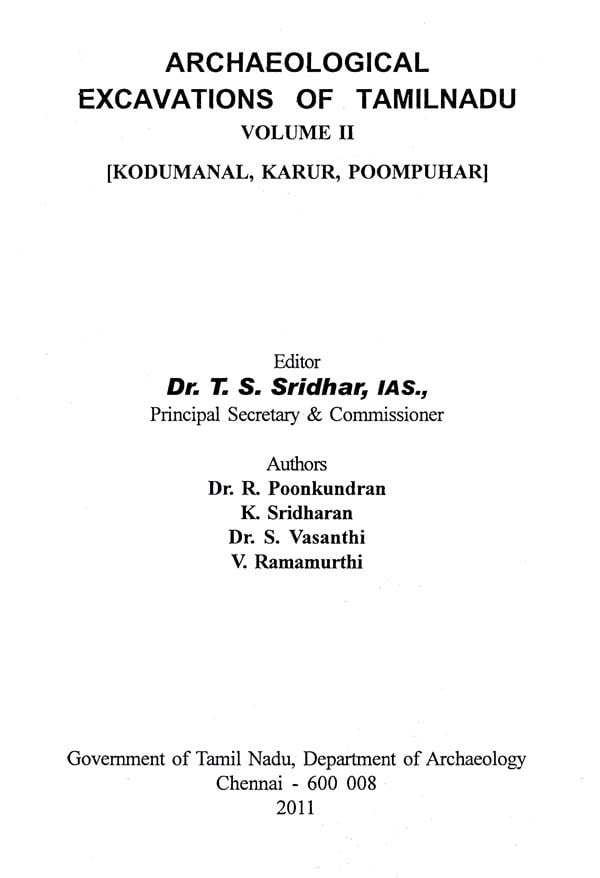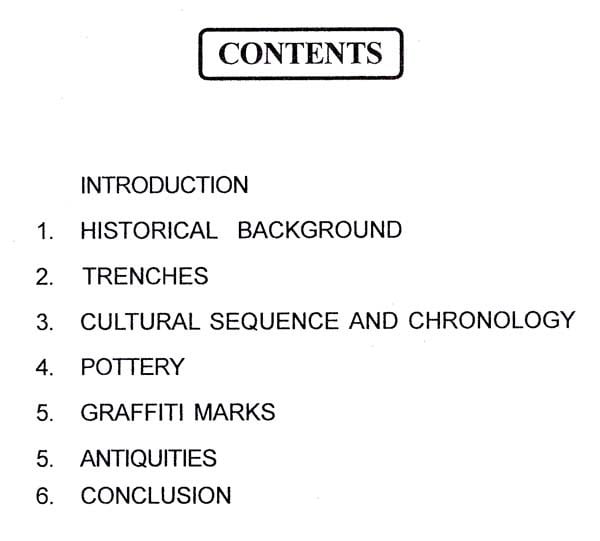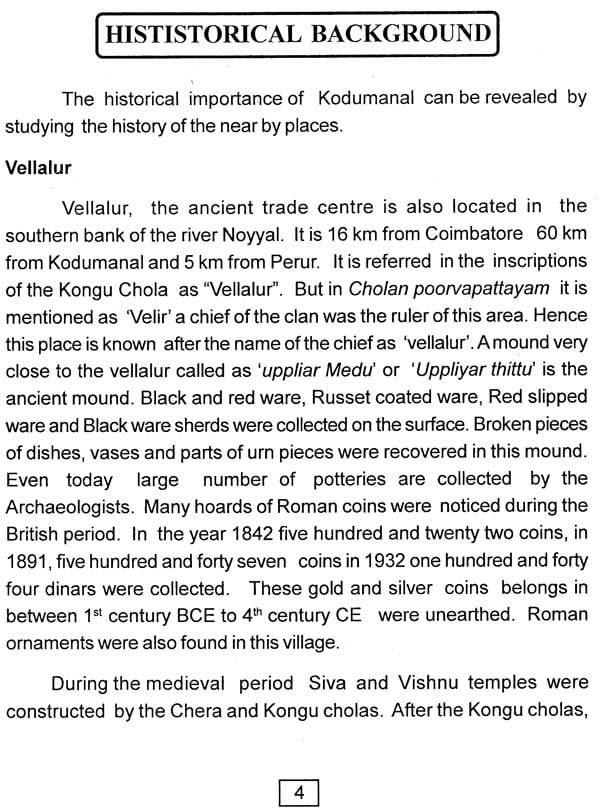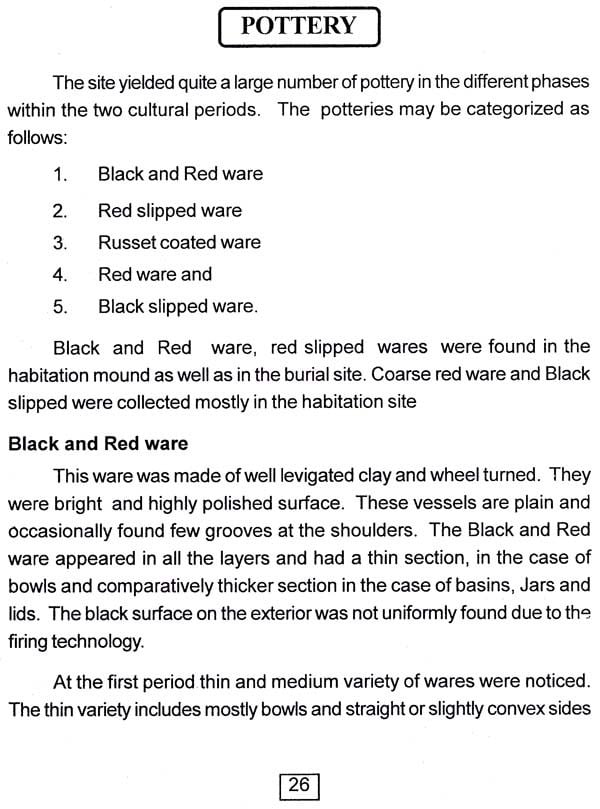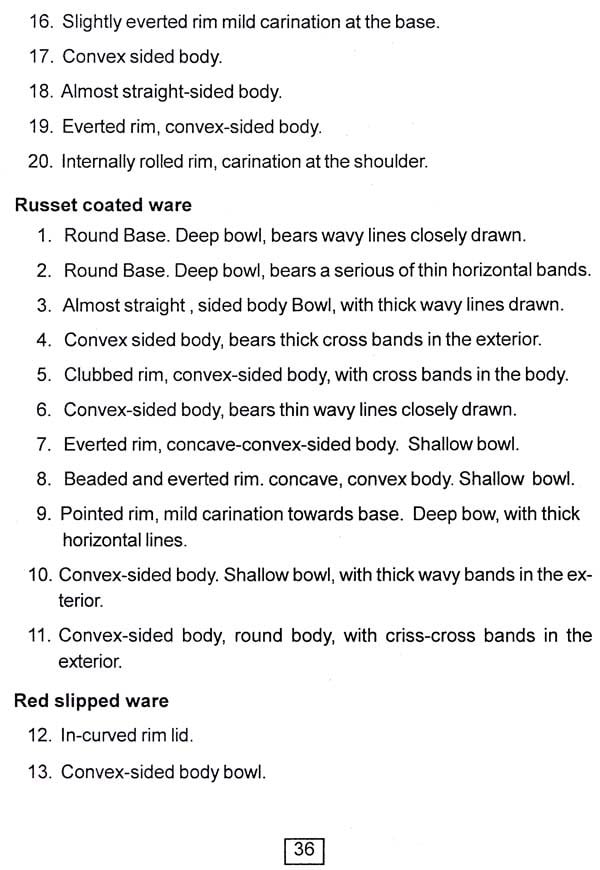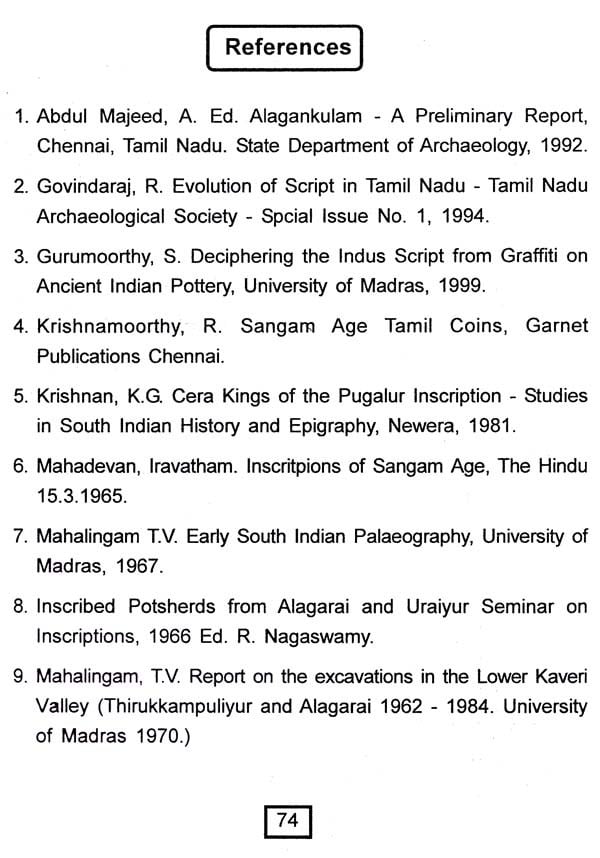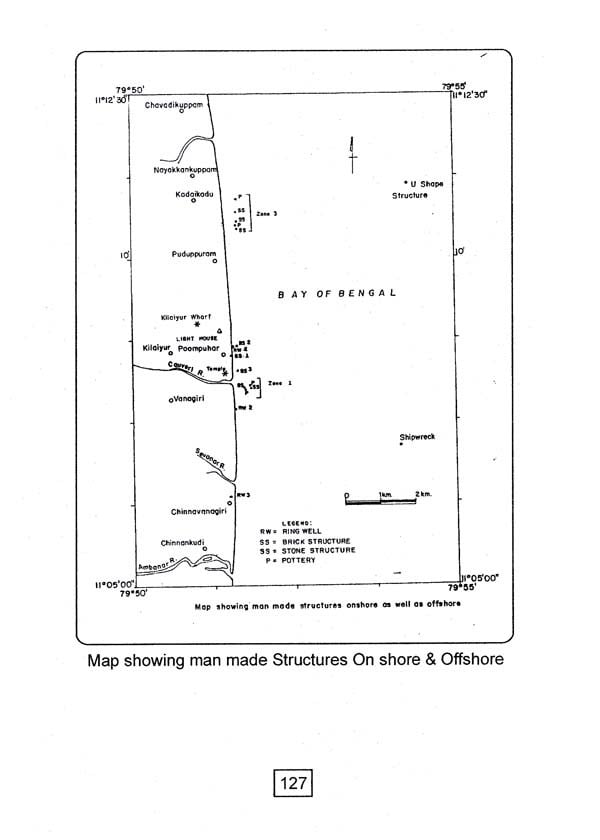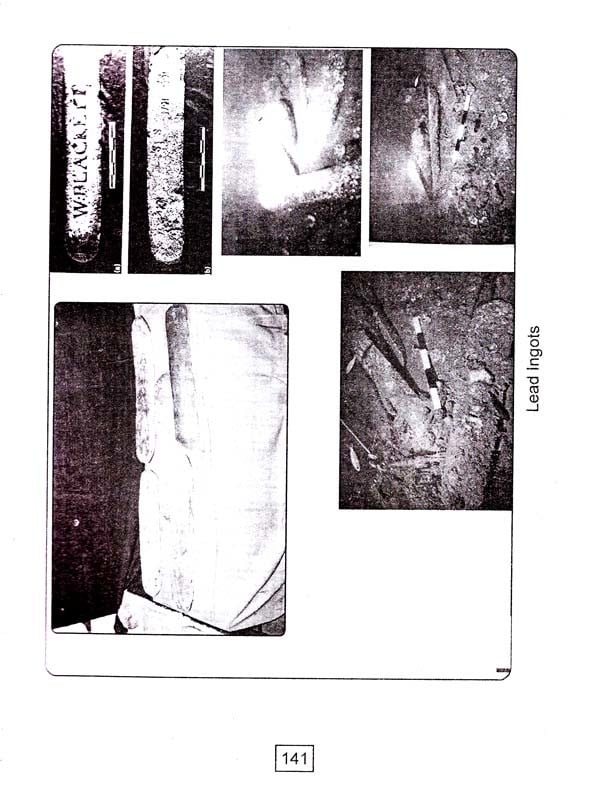
Archaeological Excavations of Tamilnadu- Kodumanal, Karur, Poompuhar (Volume 2)
Book Specification
| Item Code: | UAQ733 |
| Author: | T. S. Sridhar |
| Publisher: | Tamil Nadu State Department of Archaeology |
| Language: | English |
| Edition: | 2011 |
| Pages: | 150 (Throughout B/W Illustrations) |
| Cover: | PAPERBACK |
| Other Details | 9.50 X 7.00 inch |
| Weight | 300 gm |
Book Description
Kodumanal in (11 6 N° 30 5' E) Perundurai taluk of Erode District is located on the Southern bank of the river Noyyal, a tributary of the river Kaveri. It is also about 15 km west of Chennimalai, a famous weaving centre and 40 km South East of Erode and 45 km in the Eastern side of Coimbatore.
Kodumanal is none other than the ancient Kodumanam and is an important city in the ancient period. It is refered in the sangam literature 'Patirruppathu'. The Sangam period poets like Kabilar, Aricilkilar, Palayai Gowthamanar and Kakkaippadiniar mentioned the importance of Kodumanam in their songs. Kabilar speaks about the fine variety of earthern ware from Kodumanam. From this we can infer that high quality pots were manufactured here. There is a reference about the stone industry which was one of the important industries in ancient times.
The prime function of the department of Archaeology is to conduct excavations in archaeologically and historically important places of Tamil Nadu. So far the department has conducted excavation in 34 places all over Tamil Nadu and brought out valuable findings which revealed the ancient historical significance of the State. The excavation reports have been published for 30 sites.
The book Archaeological Excavations of Tamil Nadu-Volume II contains the report on excavation carried out at the following places.
1. Kodumanal -19 2. Karur- 1976 3. Poompuhar Kodumanal was known as Kodumanam in the early Sangam works. The discovery of number of Carnelian beads, iron objects, Iron Age pottery were the important findings from Kodumanal. Karur was the ancient capital of the Chera dynasty of Sangam period. It was also known as Vanji in Sangam literature. The excavation findings at Karur strengthened other evidences such as the finding of good number of coins, inscribed gold, silver and copper rings in Amaravathi river bed. Inscriptions bearing the names of the Chera kings near Karur at Puzhalimalai throws valuable light on the existence of Karur as the capital of the Cheras of Sangam age. Poompuhar was the second capital and trade centre of the early Chola dynasty. The department carried out offshore and on shore excavations at Poompuhar in four seasons. The discovery of wharf at Kizharveli, lead ingots and brick structures in the Bay of Bengal certainly proved that the city once existed but was swallowed by sea.
I am pleased to bring out this volume for the benefit of scholars, students and the general public. I thank the Government of Tamil Nadu for providing adequate funds to bring out this publication. I wish to place on record the contribution made by Thiruvalargal Dr. R. Nagasamy, Natana. Kasinathan, K. Damodaran and A. Abdul Majeed, former Directors of this department in the conduct of the excavations. I wish to congratulate all the excavators, the officers who prepared the reports and the press for their sincere efforts.
**Contents and Sample Pages**
